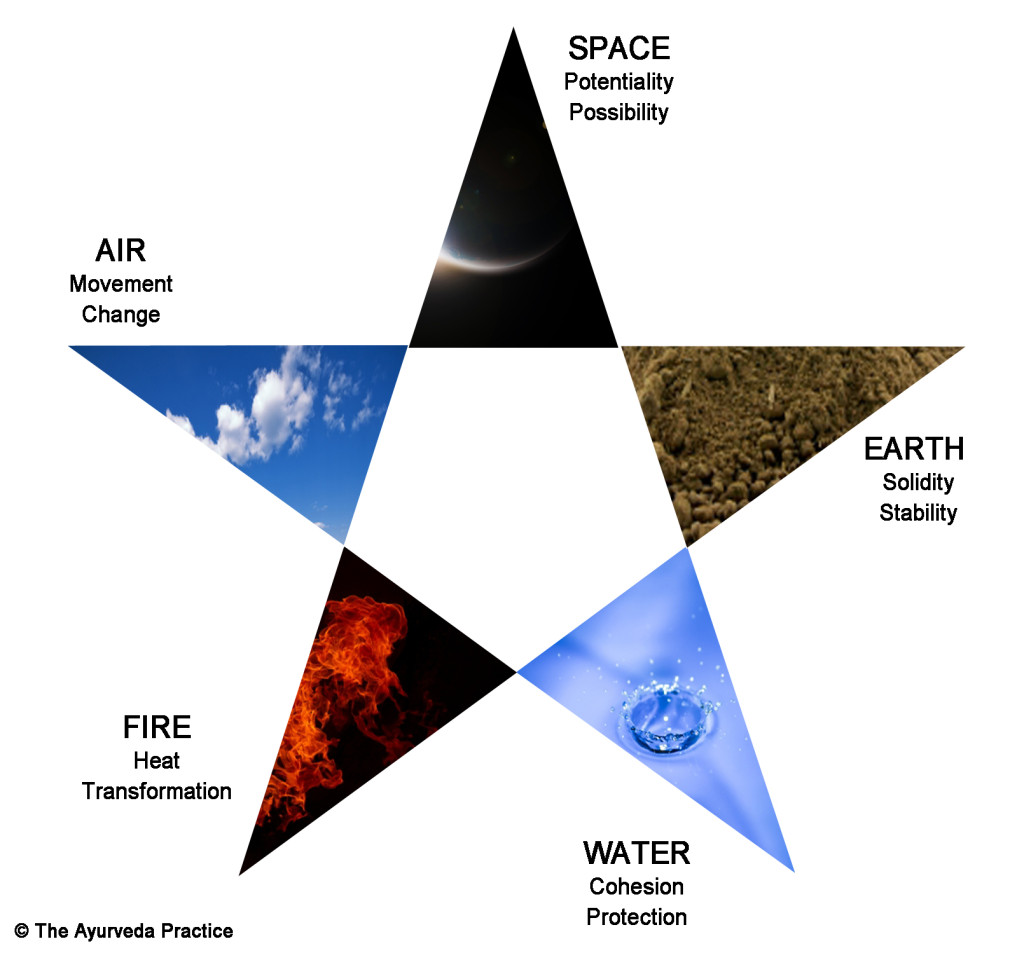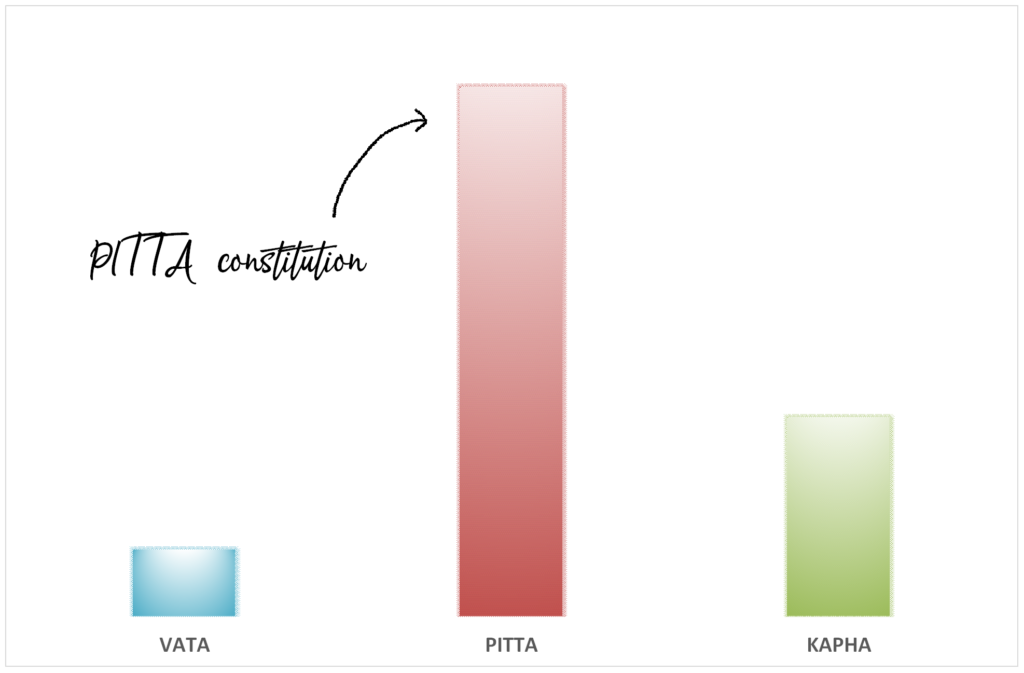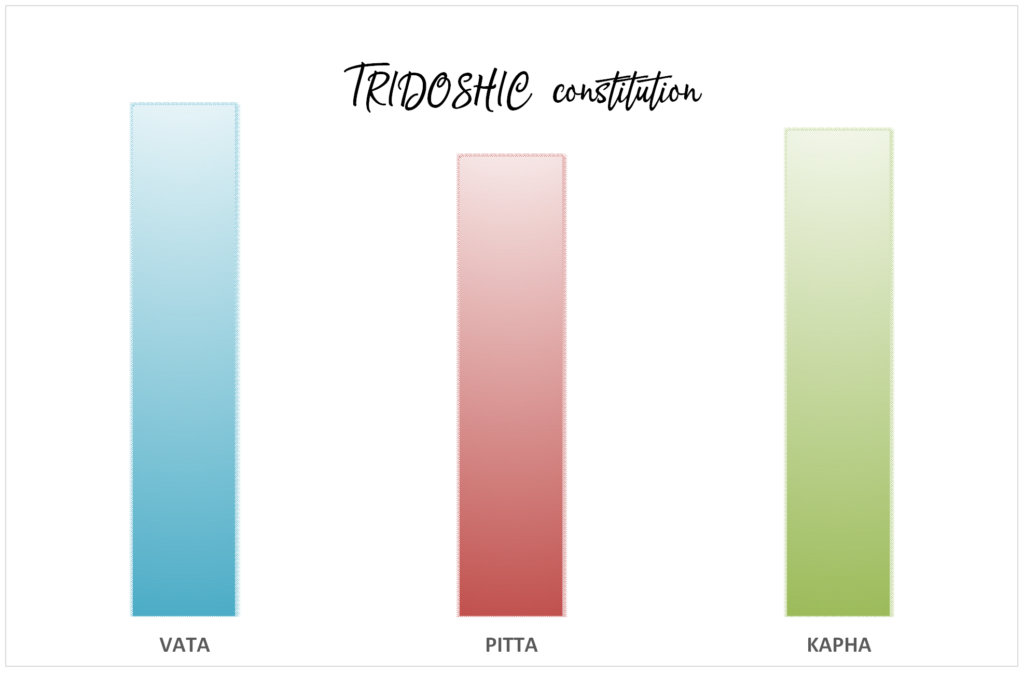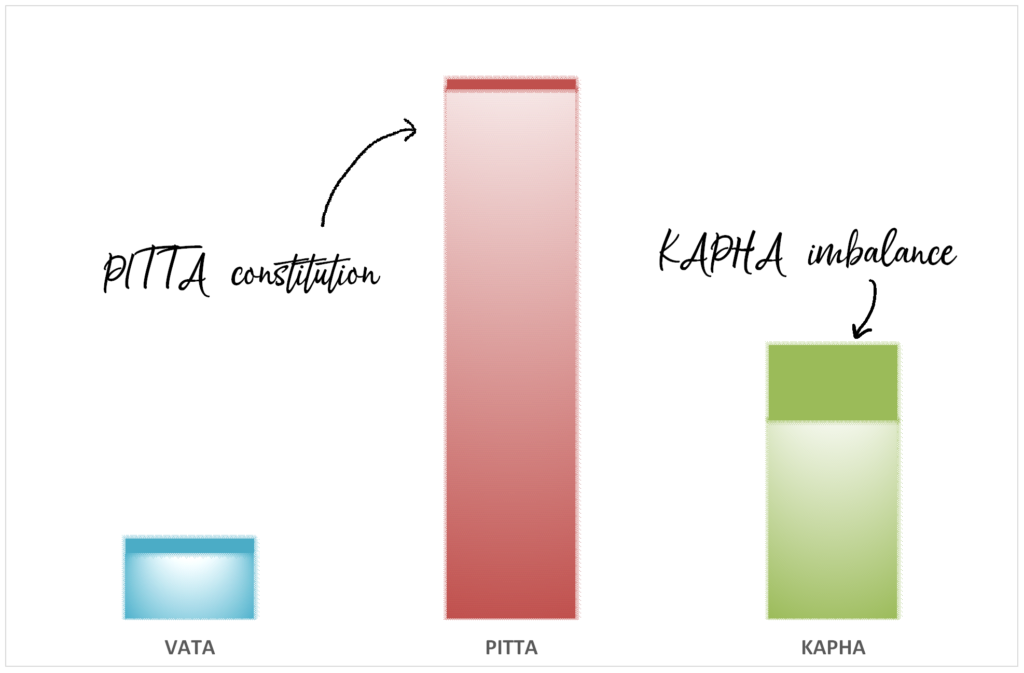We all have a constitution. This is our basic, unchanging elemental makeup that is set at conception and remains the same throughout life. In Ayurveda we see the constitution in terms of the 5 basic elements: earth, water, fire, air and space.

These elements are often seen in the mind and body in combinations which we call doshas; three principles which govern our minds and bodies. These doshas have biological and energetic properties and regulate all physiological and psychological aspects of our lives.
We are all born with a unique and individual combination of these doshas (our constitution), which defines the ways our bodies and minds naturally function and respond. It is important to be aware of our doshas as it is only when they are in their natural balanced state that we remain in health. When they get out of balance, diseases occur. You can find out more about your constitution and imbalance with the new Ayurvedic Health Check Report here.

Recognise any of these constitutions?
For example, someone who has mostly air and space elements in their body and mind will have a vata constitution which can be represented like this and would have characteristics of changeability, dryness, lightness and coldness (read more on vata here).

Or a fiery pitta constitution would look like this and would be hot, intense and have moderate build (read more on pittahere).

Sometimes people can have two main doshas, for example a pitta-kapha constitution like this and would have a combination of kapha’s heavy, firm oiliness and pitta’s fire and intensity (read more on kapha and pitta here) .

Some people have all the luck and have a tridoshic constitution, this is the strongest constitution as it’s the easiest to manage.

Sometimes (OK, often) we get out of balance
All of the above are examples of constitutions. If we lived in accordance with these; ate, drank, lived with these in mind, avoided exacerbating factors, we’d have these levels of doshas all the time and be happy and healthy. Sadly, most of us don’t live like this, through choice or circumstance, and our doshas get pushed out of balance.
How does this happen? This happens according to the rule of like increases like. If you consume lots of fiery foods and drinks (e.g. chillies, garlic, alcohol), the amount of fire (and thus pitta) in the body increases. If you eat lots of airy foods (e.g. crackers, popcorn), the quantity of air (and thus vata) in the being increases.
It is often our most dominant dosha which goes out of balance. For example, the person with the vata constitution above eating lots of vata-increasing foods and having vata-increasing lifestyle factors, could end up with a vata imbalance as below. This could show up, for example, with constipation, gas and insomnia.

It doesn’t always have to be this way. Commonly other doshas will go out of balance too. For example, with the person below, there is a pitta dominant constitution but the kapha has gone out of balance. She could be experiencing excess mucus, congestion or water retention for example.

Anyone can have an imbalance (and lots of us do!). In this example, someone has a kapha-pitta constitution and pitta has gone out of balance. Likely symptoms, amongst many others, could be hypertension, skin inflammation and feeling more angry.

Redressing the imbalance
It comes back to the simple, like increases like rule. If like increases like then opposites must decrease. If we want to bring down a pitta imbalance, we use diet and lifestyle that has opposite qualities to those of pitta.
Myth buster: we are not looking to get all our doshas equal as some people assume. The aim is to keep the doshas the same as we were born with, this is our sweet spot, our balanced place.
So what does the picture of your health look like?
You may have a very good idea of what your constitution is, and even what may be out of balance for you. If you don’t, the new Ayurvedic Health Check Report is a really good way to find out. This in-depth analysis of your constitutional and current state will give you a full report with plenty of clear diagrams and explanations. It will take you through:
- full analysis of your dosha constitution
- detailed analysis of your dosha imbalances and where these are likely to be found in the system
- a guide to your likely levels of āma (toxicity) in the 7 tissues and the digestive tract
- personalised guidance on how to rectify your imbalances using both diet and lifestyle
- advice on how to eliminate any āma in the system
All the reports are compiled by a fully qualified Ayurvedic Practitioner BSc Ayu, MAPA (aka me, Kate Siraj).
If you think this would be helpful, head over to the Health Check page here.
Until next time, take care of yourselves.
Kate



5 Comments
FR · August 8, 2019 at 13:22
Excellent blog. Helpful for me. Thanks.
To travel is to live – but don’t let it cost you your health - The Ayurveda Practice · June 21, 2019 at 15:02
[…] prone to vata going out of balance, these tips are key. You may find this if you have a vata constitution or have a current vata […]
Cool inflammation with the ‘quick purge’ - The Ayurveda Practice · February 9, 2021 at 12:33
[…] excess doshas from all the tissues and organs, including the liver (during the fat-drinking and external oil […]
Use your clever early warning system - The Ayurveda Practice · November 24, 2021 at 14:56
[…] you remember the rule: Like increases like, opposites decrease? This is a fundamental principle in Ayurveda. Substances with similar qualities will increase […]
Your guide to dosha imbalance - The Ayurveda Practice · May 10, 2023 at 14:35
[…] your skin is feeling too dry and rough. These are qualities of vata and mean vata has risen too high. You are feeling hot all the time which shows pitta is high as hot is one of pitta’s […]